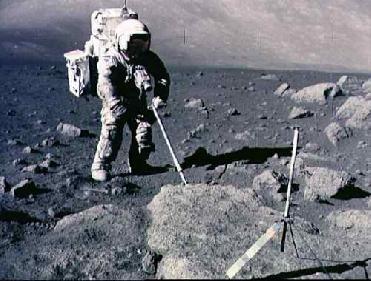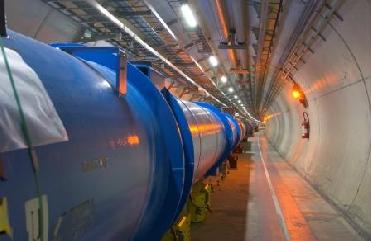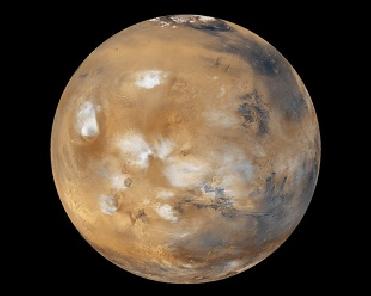
Harrison Schmidt during Apollo 17. Credit: NASA
WASHINGTON (BNS): Researchers have cracked the mystery of magnetisation on rocks brought by Apollo astronaut from the lunar surface. The research proves that 4.2 billion years ago the moon had a liquid core with a dynamo, like Earth�s core today, that produced a strong magnetic field.
According to researchers the particular moon rock that produced the new evidence was long known to be a very special one. �It is the oldest of all the moon rocks that have not been subjected to major shocks from later impacts - something that tends to erase all evidence of earlier magnetic fields. In fact, it�s older than any known rocks from Mars or even from the Earth itself,� they said.
In a research published in the journal Science on January 16, Ben Weiss, the Victor P. Starr Assistant Professor of Planetary Sciences in MIT's Department of Earth, Atmospheric and Planetary Sciences, said that many people thought it was the most interesting lunar rock.
Co-autthor Ian Garrick-Bethell said that it is one of the oldest and most pristine samples known. �If that wasn�t enough, it is also perhaps the most beautiful lunar rock, displaying a mixture of bright green and milky white crystals,� Garrick-Bethell said.
The rock collected by Apollo 17 geologist Harrison �Jack� Schmidt was researched for faint magnetic traces in a small sample of the rock in great detail. �Using a commercial rock magnetometer that was specially fitted with an automated robotic system to take many readings allowed us to make an order of magnitude more measurements than previous studies of lunar samples,� Garrick-Bethell said. This permitted us to study the magnetisation of the rock in much greater detail than previously possible, the researcher said.
The data helped researchers to rule out other possible sources of magnetic traces, such as magnetic fields briefly generated by huge impacts on the moon. �Those magnetic fields are very short lived, ranging from just seconds for small impacts up to one day for the most massive strikes. But the evidence found on the lunar rock showed it must have remained in a magnetic environment for a long period of time, millions of years, and thus the field had to have come from a long-lasting magnetic dynamo,� they said.
However, Weiss said that was not a new idea, but it had been one of the most controversial issues in lunar science. Until Apollo missions, many prominent scientists were convinced that the moon was born cold and stayed cold, never melting enough to form a liquid core. But, Apollo proved that there had been massive flows of lava on the moon�s surface, but the idea that it has, or ever had, a molten core remained controversial. �People have been vociferously debating this for 30 years,� Weiss said.
Explaining further, Weiss said that the magnetic field necessary to have magnetised this rock would have been about one-fiftieth as strong as today�s Earth. �This is consistent with dynamo theory, and also fits in with the prevailing theory that the moon was born when a Mars-sized body crashed into the Earth and blasted much of its crust into space, where it clumped together to form the moon,� Weiss added.
The new finding underscores how much we still don't know about our nearest neighbour in space, which will soon be visited by humans once again under current NASA plans. �While humans have visited the moon six times, we have really only scratched the surface when it comes to our understanding of this world,� Garick-Bethell said.













The Indian Air Force, in its flight trials evaluation report submitted before the Defence Ministry l..
view articleAn insight into the Medium Multi-Role Combat Aircraft competition...
view articleSky enthusiasts can now spot the International Space Station (ISS) commanded by Indian-American astr..
view article